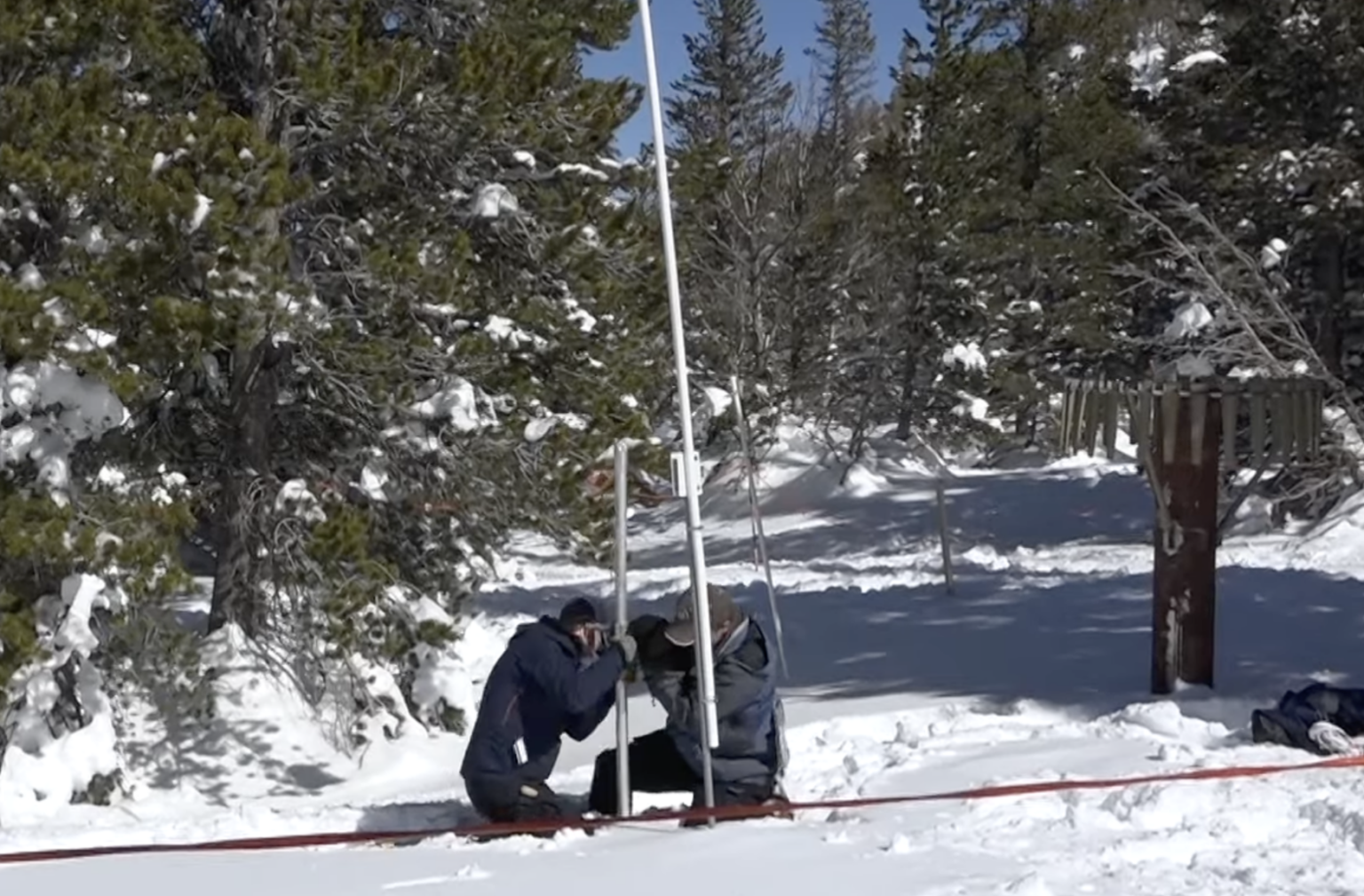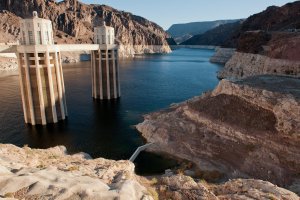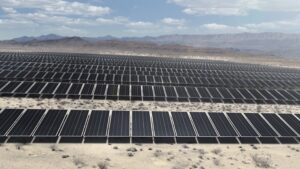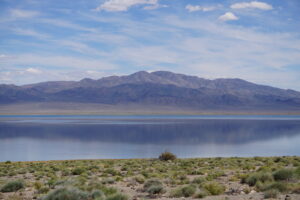Snowpacks in Nevada are well below normal in most parts of the state, but reservoir storage and rainfall will likely offer a buffer against drought if conditions continue to be dry.
Snowpack in much of the state is well below normal at 56% of median, compared to 215% at this time last year.
Current snow amounts in the eastern Sierra, a major water source for Nevada, are reminiscent of 2012, 2014 and 2015, each of which ended with snowpacks well below normal, according to the U.S. Department of Agricultural Natural Resources Conservation Service’s winter outlook report.
Nevada is not the only state with a disappointing snowpack as most of the West is experiencing snow drought, said the service. Across the west, dry December conditions and warm temperatures have set the stage for likely record or near-record low snowpacks.
Low snowpack in the Upper Colorado, a major source of water for Las Vegas, could mean less stream flow in the spring and summer for lower basin states. According to the service, January snowpacks in the Upper Colorado are only 67% of normal compared to past years.
Rainfall in the Upper Colorado basin has been similarly dry, with only 74% of median precipitation so far this water year.
Several parts of Nevada are also seeing below normal precipitation. Since October, the Tahoe, Truckee, Carson and Walker basins, as well as Eastern Nevada, have experienced 38-63% of normal precipitation.
However, precipitation amounts are near normal for most of northeastern Nevada, with above normal precipitation in the Owyhee basin.
The Owyhee basin is also the only basin in Nevada seeing slightly above normal snowpack so far this winter.
Higher than typical temperatures in Nevada’s lower elevations from October to December has contributed to a below average snowpack for the state’s lower valleys, according to the service. Rainfall at lower elevations in the state was also below average during those same months.
Despite the disappointing winter outlook report, federal resource managers say it’s still very early in the season, and much can change between now and spring. Forecast accuracy is low in January, mainly due to the unpredictable nature of snow storms.
The best water supply news in 2024 so far is the water Nevada managed to store from 2023. The volume of stream flow produced from last winter’s record snowpack has allowed reservoir managers to carry over excellent storage amounts into 2024.
Reservoir storage levels in Lake Tahoe, Stampede, Lahontan, Bridgeport, Topaz, Rye Patch, and Wildhorse reservoirs, as well as Lake Mead and Lake Powell are significantly above the same time last year.
Stream flows for the Carson and Water rivers broke several records last spring. The most notable 2023 record was the Carson River at Fort Churchill where stream flow throughout the spring was the highest volume recorded in 112 years of measurement.
Record stream flows throughout Nevada were enough to meet summer demand and allow water to be stored in several reservoirs for the next year and serve as a buffer if conditions continue to be dry. Federal resource managers also noted that current stream flow from the Humboldt River to Rye Patch Reservoir should help boost runoff there in the spring.
Summer storms in Nevada have also ensured high soil moisture in most basins. That soil moisture will help ensure efficient snowmelt runoff in spring, but more snow is needed for a prolonged melt.
Hurricane Hilary was the most impressive of these summer storms, according to the service. Waves of tropical moisture brought severe flooding and damage to southern Nevada. Spring Mountains, in Southern Nevada, saw 11.9 inches of rain over two days. But the storm also benefited Eastern Nevada and the Upper Humboldt Basin, which saw rain amounts of between 2 to 4 inches boosting soil moisture to record summer levels.
While there is a lack of snow and widespread precipitation so far this season, Nevada’s drought status is much better than a year ago, according to the service. The improvement is thanks to last winter’s record-breaking snowpack that produced above normal stream flow, a cooler than normal summer, and above normal summer precipitation from the remnants of Hurricane Hilary.
Only Clark County and White Pine County are experiencing abnormally dry conditions to moderate drought. January snowpacks in Spring Mountains, a significant water source for Southern Nevada, are only 9% of normal. Still, drought in both county’s is significantly lower than the same time last year.
Our stories may be republished online or in print under Creative Commons license CC BY-NC-ND 4.0. We ask that you edit only for style or to shorten, provide proper attribution and link to our website. AP and Getty images may not be republished. Please see our republishing guidelines for use of any other photos and graphics.




